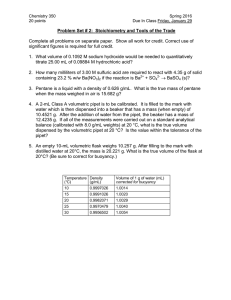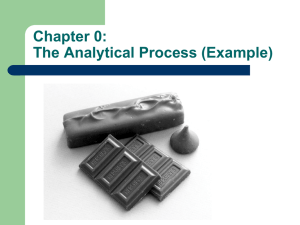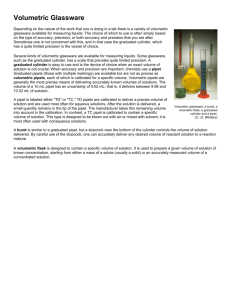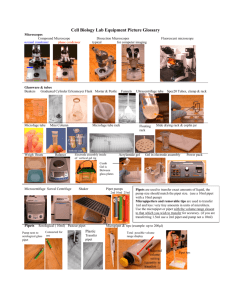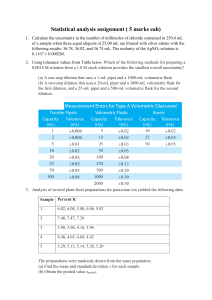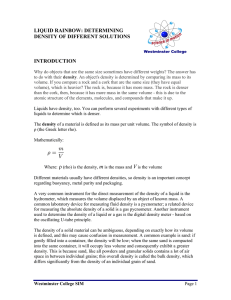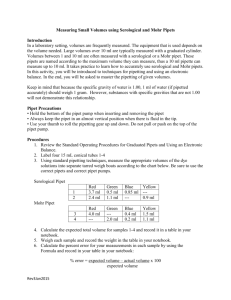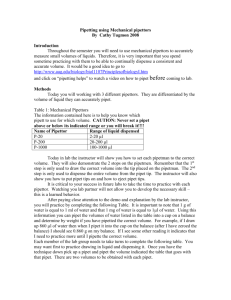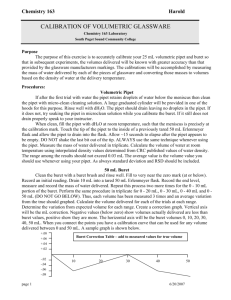DENSITY OF A LIQUID
advertisement
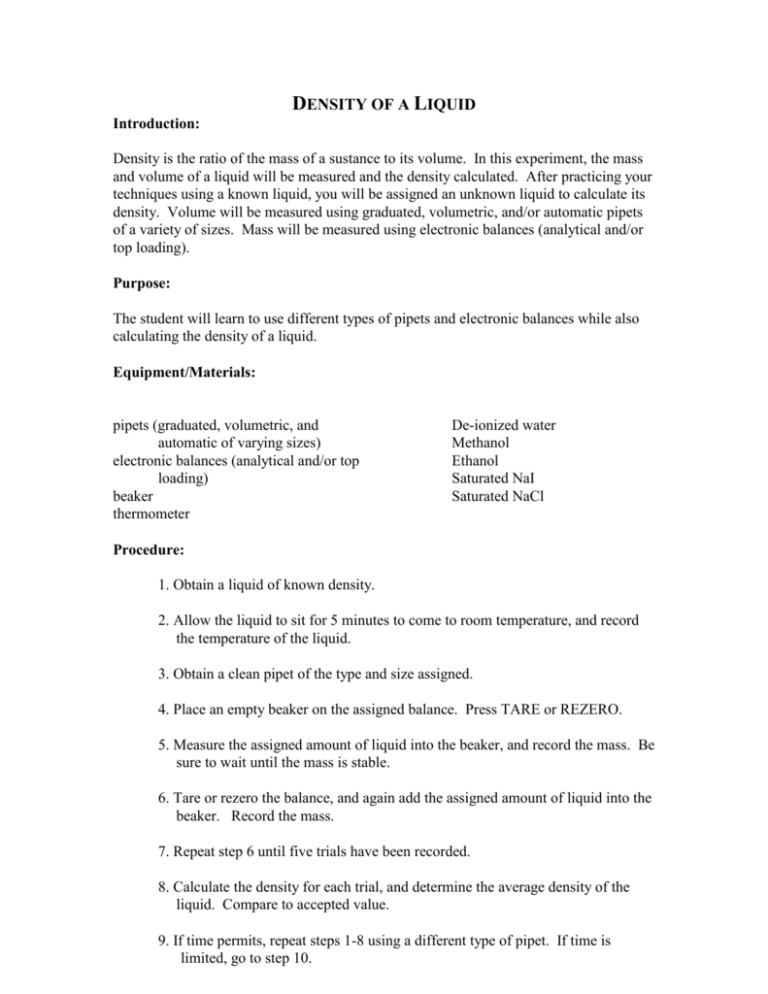
DENSITY OF A LIQUID Introduction: Density is the ratio of the mass of a sustance to its volume. In this experiment, the mass and volume of a liquid will be measured and the density calculated. After practicing your techniques using a known liquid, you will be assigned an unknown liquid to calculate its density. Volume will be measured using graduated, volumetric, and/or automatic pipets of a variety of sizes. Mass will be measured using electronic balances (analytical and/or top loading). Purpose: The student will learn to use different types of pipets and electronic balances while also calculating the density of a liquid. Equipment/Materials: pipets (graduated, volumetric, and automatic of varying sizes) electronic balances (analytical and/or top loading) beaker thermometer De-ionized water Methanol Ethanol Saturated NaI Saturated NaCl Procedure: 1. Obtain a liquid of known density. 2. Allow the liquid to sit for 5 minutes to come to room temperature, and record the temperature of the liquid. 3. Obtain a clean pipet of the type and size assigned. 4. Place an empty beaker on the assigned balance. Press TARE or REZERO. 5. Measure the assigned amount of liquid into the beaker, and record the mass. Be sure to wait until the mass is stable. 6. Tare or rezero the balance, and again add the assigned amount of liquid into the beaker. Record the mass. 7. Repeat step 6 until five trials have been recorded. 8. Calculate the density for each trial, and determine the average density of the liquid. Compare to accepted value. 9. If time permits, repeat steps 1-8 using a different type of pipet. If time is limited, go to step 10. 10. Obtain an unknown liquid and repeat steps 2-8 using the unknown liquid. De-ionized water Methanol Saturated NaI 1.00g/mL 0.8127g/mL 1.918g/mL Data Table: Liquid used:_____________________________________________________ Temperature of the liquid:__________________ Accepted density at recorded temperature:______________________________ Type of pipet used:_____________________________Size of pipet used:__________mL Balance used:____________________________________________________ trial # 1 2 3 4 5 mass volume density Average density _____________________ Unknown liquid number:_______________________ Temperature of the liquid:__________________ Type of pipet used:_____________________________Size of pipet used:__________mL Balance used:____________________________________________________ trial # 1 2 3 4 5 mass volume Average density ___________________ density Questions: 1. a. Why was it necessary to record the temperature of the liquid? b. Why was it necessary to allow the liquid to sit for 5 minutes before recording the temperature? 2. How was the density of the liquid calculated? 3. Why were measurements taken five times instead of only once?
